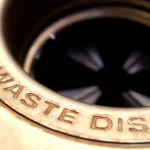With winter far from over, we can expect another cold snap or three to hit us before it starts to warm up. Plumbers in Toronto have been very busy handling the fallout after the ice-storm and the subsequent power outage, and are likely to be busy for some time to come. Meanwhile, another Arctic blast could make it cold enough to freeze any exposed water pipes all over again. If you’re still dealing with burst pipes from the last time around, here are some ways to make sure it doesn’t happen again.
#1: Prevention is Better than Cure
There are a number of ways to prevent most frozen water pipes from occurring, particularly if they’re located near exterior walls, areas that aren’t well insulated, or near the section where water enters the home from the supply system:
- Open the faucet to a trickle and leave the water running, which will prevent it from freezing.
- Insulate the pipes before time by wrapping them with electrical heat tape or other insulating materials.
- Open up space and allow air to flow freely around the pipes.
- Position a heater close by to warm up the air in the room.
#2: A Thaw in Time
If you discover the pipes have already frozen, there may still be time to stop the process before it becomes a problem. Follow the steps above if you can, to prevent the freeze from getting worse. At the same time, check the pipes throughout your home to determine how widespread the problem is. It could be just a single section of pipe or a faucet, or it could be a whole area.
#3: Freeing the Freeze
Freeing your frozen water pipes as soon as possible is critically important to minimize the water damage to your home. Once you’ve ascertained how many pipes are affected, you can plan your strategy for thawing them. In cases where you’ve had a power outage for several days, you may find many areas of pipe frozen. Follow these steps for a successful operation:
- Check for any pipes that are noticeably damaged, and position containers beneath them to catch the water once it thaws.
- Warm up the house, if possible, or at least the area where the pipes are frozen.
- Test each faucet in your home and let it run for a few minutes to see if the water is frozen.
- Turn off your main water inlet to reduce the amount of flooding and water damage you might experience when the ice melts.
- Use a direct source of heat to warm and thaw the frozen water pipes, such as a hairdryer aimed at the pipe held about six inches away, an electric heating pad wrapped around the pipe or a portable space heater positioned fairly close by in a safe location.
#4: Keep it Moving
Once the frozen water pipes start to thaw, keep it moving by opening the faucet (if the pipe is undamaged). Keep the temperature up and monitor the pipes until water is running through freely, indicating regular pressure. If you see any decrease in pressure it could mean there is still ice inside the pipe. Call your Toronto plumbers for an estimate to have any damaged sections of pipe replaced.
Warning: You should never use a blowtorch or any other open flame to that frozen pipes. This can not only cause a fire but could result in a rupture in a pipe that might otherwise have been possible to save.






